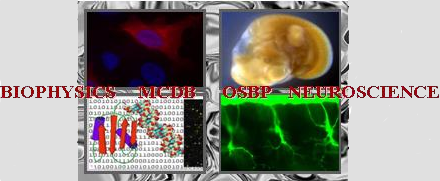Poster abstracts
Poster number 28 submitted by Jeffrey Tonniges
Ultrastructural Imaging of Collagen Fibrils in Mouse Model of Abdominal Aortic Aneurysm
Jeffrey R Tonniges (Biophysics, Ohio State University), Benjamin Albert (Biomedical Engineering, Ohio State University), Advitiya Mahajan (Center for Cardiovascular Research, Nationwide Childrens Hospital), Edward P Calomeni (Pathology, Ohio State University), Chetan P Hans (Center for Cardiovascular Research, Nationwide Childrens Hospital), Gunjan Agarwal (Biomedical Engineering, Ohio State University)
Abstract:
Abdominal aortic aneurysms (AAA) are a leading cause of death in the US. An aortic aneurysm is a persistent abnormal dilatation of the aorta that usually has no symptoms until it ruptures, which is a serious medical emergency. The specific cause of aortic aneurysms is still enigmatic, but it is believed to be initiated by degradation of elastin in the aortic wall. This degradation leads to weakening of the aorta, and in response the aorta is remodeled by degradation and deposition of collagen.
An open question in AAA pathology is: what is the quality of the collagen deposited in the AAA remodeling process and is this quality related to the risk of rupture. Previous studies of collagen in AAA have found defects in the organization and micro-architecture of collagen within AAA, and have correlated these defects with differences in aortic stiffness. However, only limited ultrastructural information has been gathered of collagen within AAA. This study aimed to determine if AAA contains ultrastructural defects in collagen.
To investigate the ultrastructural features of collagen in AAA, we imaged collagen in situ from a mouse model of AAA using transmission electron microscopy (TEM) and atomic force microscopy (AFM).
Abnormal collagen fibrils with compromised banded structure were observed in AAA. A subset of abnormal collagen fibrils showed the normal ~67 nm D-banded structure, but contained a reduced depth of D-banded structure.
To explore a possible cause of the abnormal collagen fibrils, we examined the expression and phosphorylation levels of the collagen receptors, discoidin domain receptors (DDR1 and DDR2) using immunohistochemistry. DDR1 and DDR2 expression and phosphorylation staining was increased compared to control aortas. Most strikingly, there was little to no staining for DDR1 or DDR2 phosphorylation in control aortas, but strong staining in AAA, particularly in regions of collagen remodeling.
In conclusion, the abnormal collagen fibrils and correlation to increased DDR1 and DDR2 phosphorylation represent novel parameters to characterize pathological collagen remodeling in the arterial wall. Furthermore, the abnormal collagen fibrils could be a risk factor for aneurysm rupture, and DDR1 and DDR2 phosphorylation could be a therapeutic target for AAA.
Keywords: collagen, aneurysm, receptor tyrosine kinase
